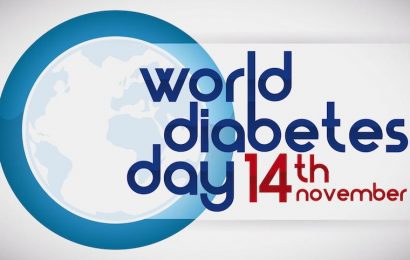People with diabetes — both Type 1 and Type 2 — are often told about the importance of portion size and meal planning. Limiting portion sizes, many sources and studies say, is often the key to weight loss and better health both for people with diabetes and those in the general population. But what if the key to good health isn’t limiting portions at each meal, but stuffing yourself for just one meal each day?
So suggests a new study, published earlier this month in the journal PLoS ONE. According to an article on the study at Medical Daily, researchers at Linköping University in Sweden sought to find out whether a Mediterranean diet, concentrated into one large lunchtime meal, could be good for people with Type 2 diabetes, compared with either a low-carbohydrate or a low-fat diet consumed over both breakfast and lunch. According to one of the study’s coauthors, the researchers decided to test this approach because in many areas of the Mediterranean, it is traditional to eat a large midday meal and a very small evening meal, if any at all. For the study, 21 participants with Type 2 diabetes (who didn’t take insulin or a sulfonylurea drug) were assigned to follow each of the three diets in random order, spread out over time, for a single day. Obviously, no long-term effects could be measured with this approach, but the researchers were interested in the effects of each diet on postmeal blood glucose, insulin, and triglyceride levels.
Meals for the study were consumed under supervision at the diabetes ward of a research hospital, and each participant received about the same number of calories each day regardless of which diet was being tested (905–984 calories for women, 1025–1080 for men). The low-fat diet consisted of 45% to 56% of calories from carbohydrate, while the low-carb diet consisted of 16% to 24% of energy from carbs. The Mediterranean diet consisted of black coffee for breakfast, then the entire day’s calories served in a lunch of salmon, tomato, cucumber, arugula, olives, nuts, bread, and red wine. Carbohydrates represented 32% to 35% of calories for this meal.
Perhaps predictably, the low-carb diet resulted in lower postmeal glucose and insulin levels than the low-fat diet, and the lowest insulin and glucose levels following lunch. The large Mediterranean meal caused the largest insulin spike following lunch, but it caused glucose to spike slightly less after lunch than the low-fat meal — not a bad result, given how much larger it was. In addition, the Mediterranean diet led to lower levels of triglycerides than the low-carb diet. Not surprisingly, levels of glucose, insulin, and triglycerides were extremely low on the Mediterranean diet until after lunch. Based on these results, the researchers recommended considering larger midday meals for people with Type 2 diabetes, while cautioning that further study is needed to understand the long-term effects of this eating pattern.
What’s your position on grazing versus gorging (which we examined earlier this year here at Diabetes Flashpoints)? Have you ever tried eating just one big meal each day, with maybe a small snack in the evening? If so, do you think you eat more or less overall with this approach? Do you think your overall blood glucose control, as measured by HbA1c, would be better or worse with just one big glucose spike each day? Would it be impractical for most Americans to eat a large midday meal that includes wine? Leave a comment below!




